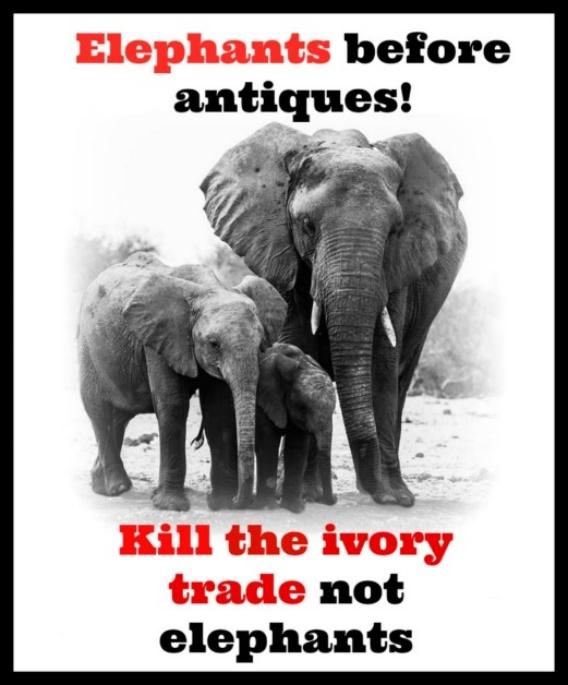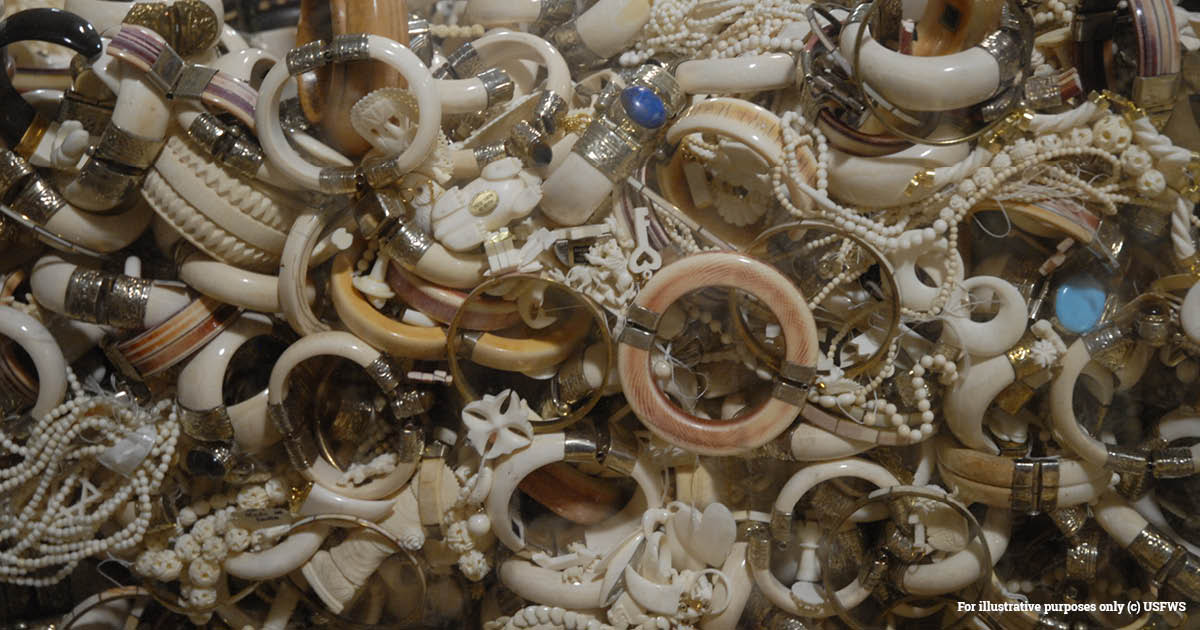
As the largest exporter of ivory in Europe, as well as allowing a thriving ivory trade at home, the UK played a major role in feeding consumer demand for ivory. In auction houses, antique stores, market stalls, and online sales, ivory was traded openly in countless outlets. This trade served as cover for the illegal ivory trade, which was barely being monitored. With so much legal and illegal trade going on, it was clear that the UK had a complicit role in the ongoing cycle of supply and demand. But the antiques trade maintained this wasn’t the case and put up fierce opposition to the ban at every step.
Action for Elephants fought for a UK ivory ban from 2014 and was the only group taking action on the streets, with protests outside embassies, at auction houses, outside DEFRA, and at Downing St and Parliament. We held some 14 protests to demand a ban on ivory trade, wrote numerous letters to two prime ministers, replied to all the government consultations, and met with MPs and representatives of the antiques trade. Our role in pushing for the most stringent of bans was acknowledged in the government’s 2017 and 2018 Briefing Papers on ivory trade.

The UK was the world’s largest exporter of legal ivory, including to China and Hong Kong, making it a key player in the trade that was wiping out Africa’s elephants.
UK’s Ivory Trade: Timeline
Action for Elephants UK was in the forefront of protests against the ivory trade and to strengthen the ban, holding these events between 2014 and 2020:
DEMO AT CHINESE EMBASSY, LONDON – JAN 2014
1st GLOBAL MARCH FOR ELEPHANTS & RHINOS, LONDON – OCT 2014
DEMO AT CHINESE EMBASSY, LONDON – JAN 2015
2nd GLOBAL MARCH FOR ELEPHANTS & RHINOS, LONDON – OCT 2015
PROTEST AT CHRISTIE’S AGAINST UK IVORY TRADE, LONDON – MARCH 2016
PROTEST AT WOOLLEY & WALLIS AUCTION HOUSE, SALISBURY – MAY 2016
3rd GLOBAL MARCH FOR ELEPHANTS & RHINOS, LONDON – SEPT 2016
PROTEST AT DEFRA CALLING FOR UK BAN ON IVORY TRADE, LONDON – NOV. 2016
DEMO AT WESTMINSTER FOR DEBATE ON UK IVORY TRADE, LONDON – FEB 2017
ANTI-IVORY PROTEST AT OLYMPIA ANTIQUES FAIR – JULY 2017
SILENT PROTEST – 4TH GLOBAL MARCH FOR ELEPHANTS & RHINOS, LONDON – OCT 2017
5th GLOBAL MARCH FOR ELEPHANTS & RHINOS 2019 – APRIL 2019
Our letters to prime ministers calling for a ban:
To David Cameron – Oct 2015
Theresa May – Sept 2016 The Guardian
Theresa May – Jan 2017 The Guardian
Theresa May – Oct 2017